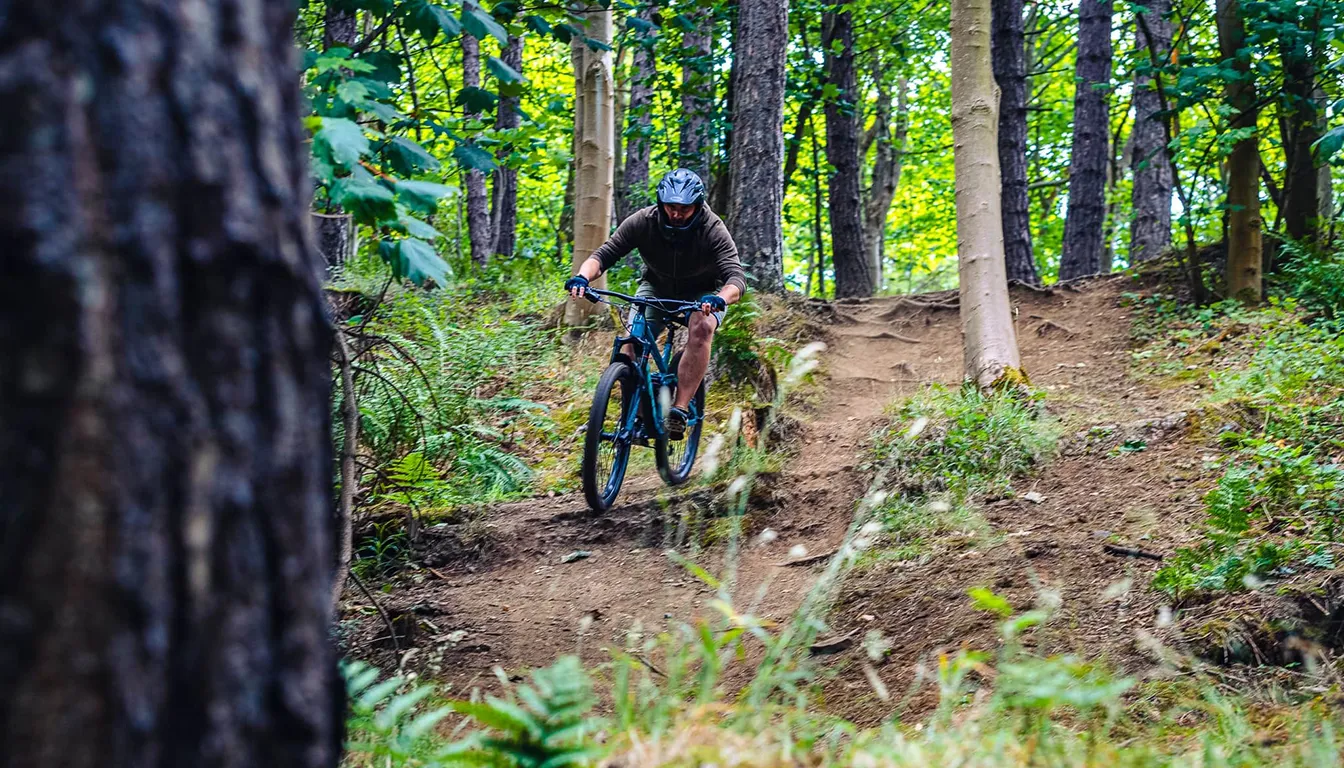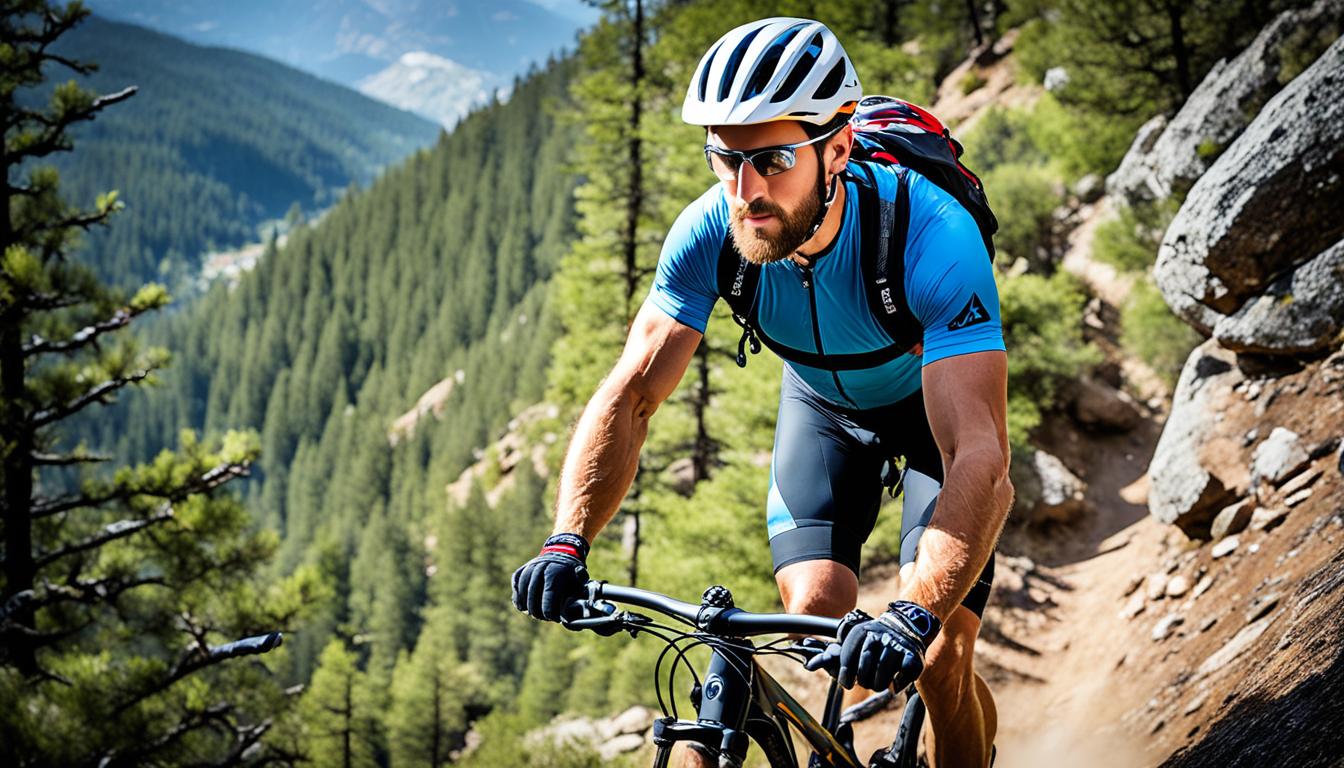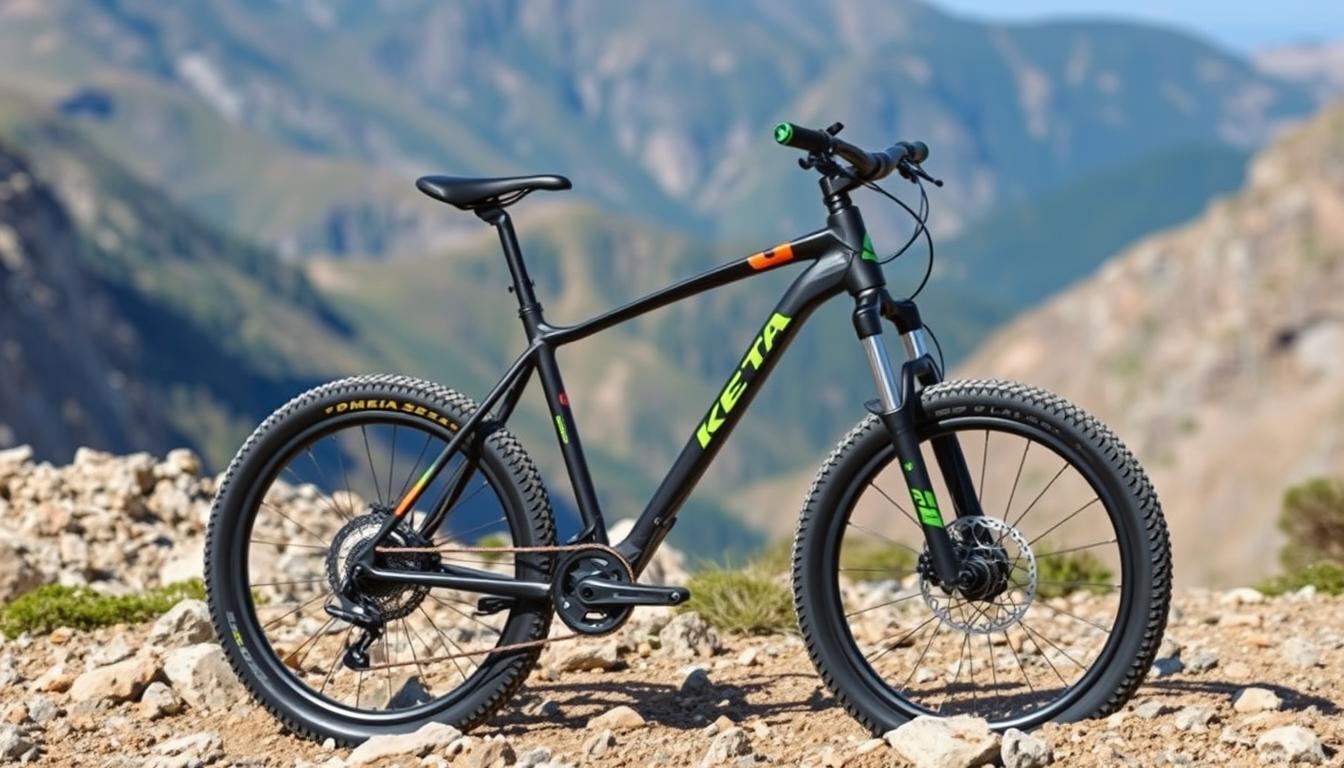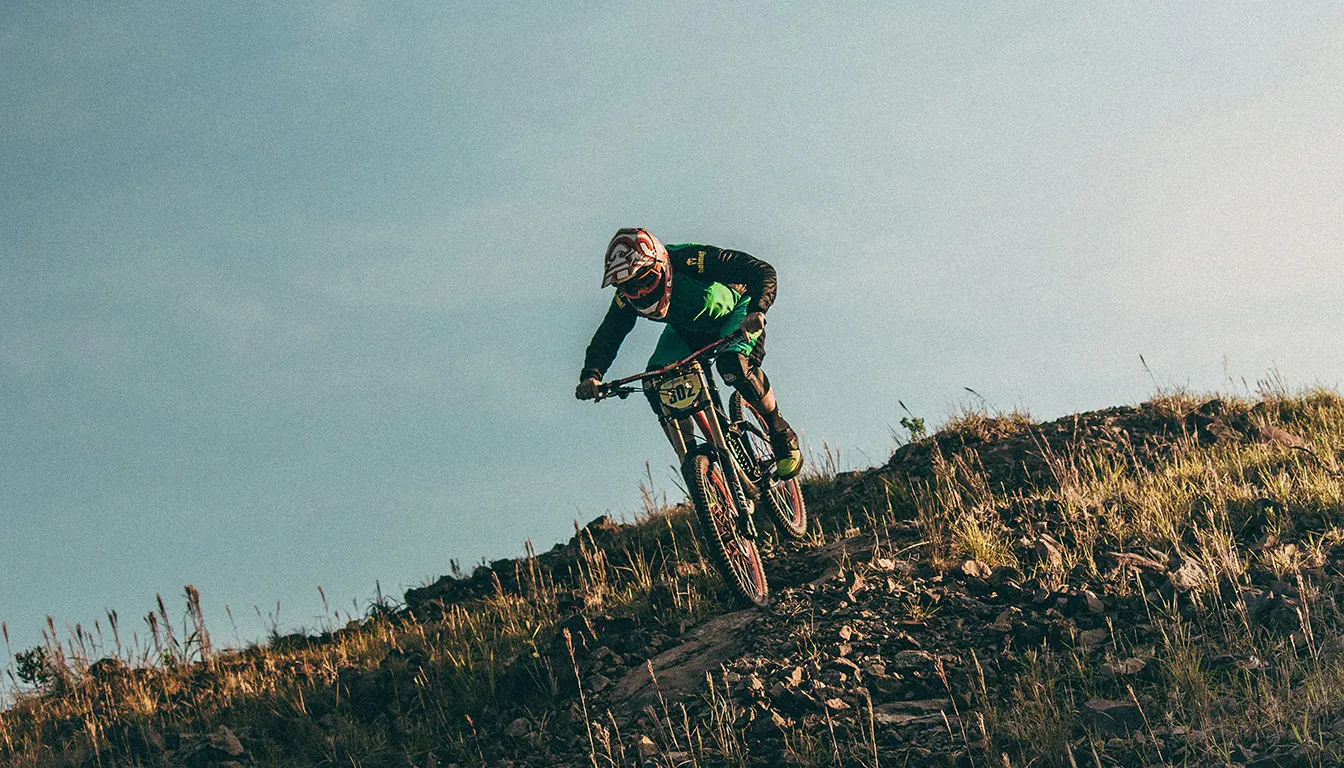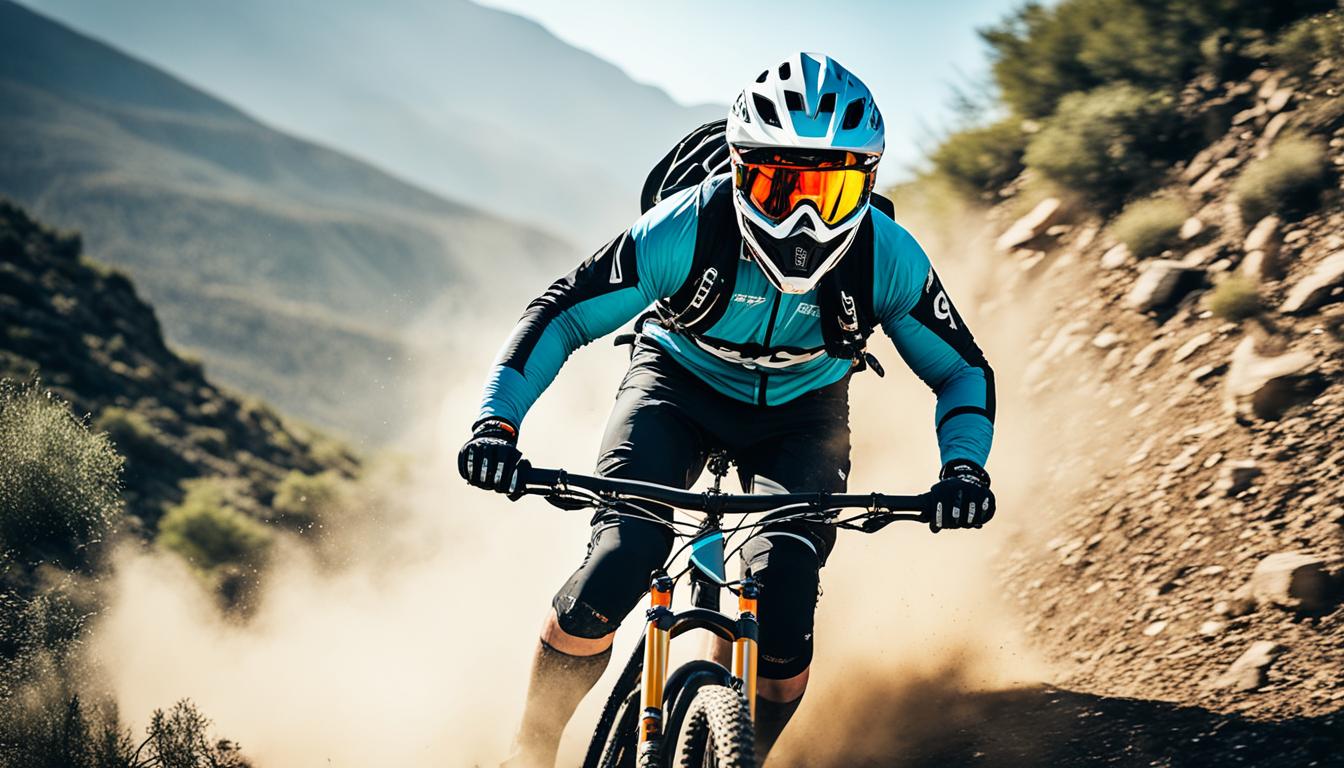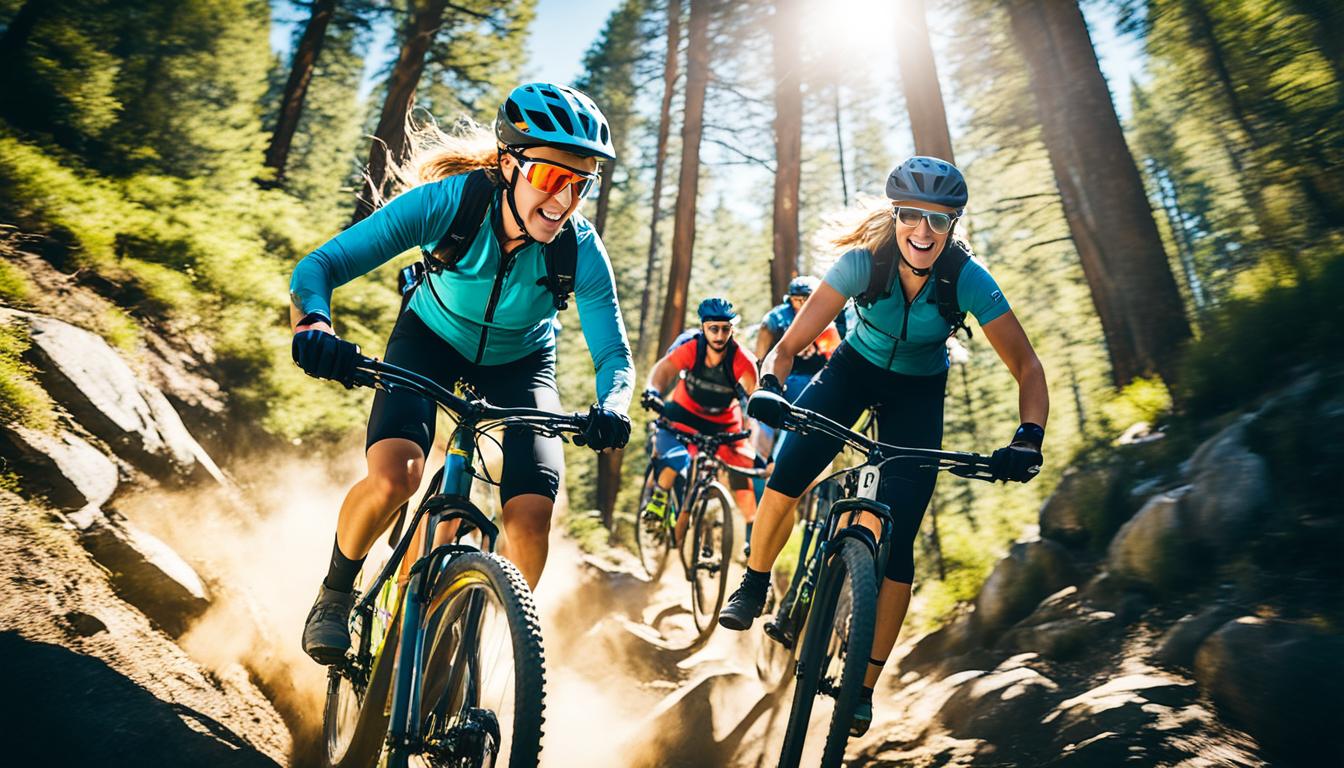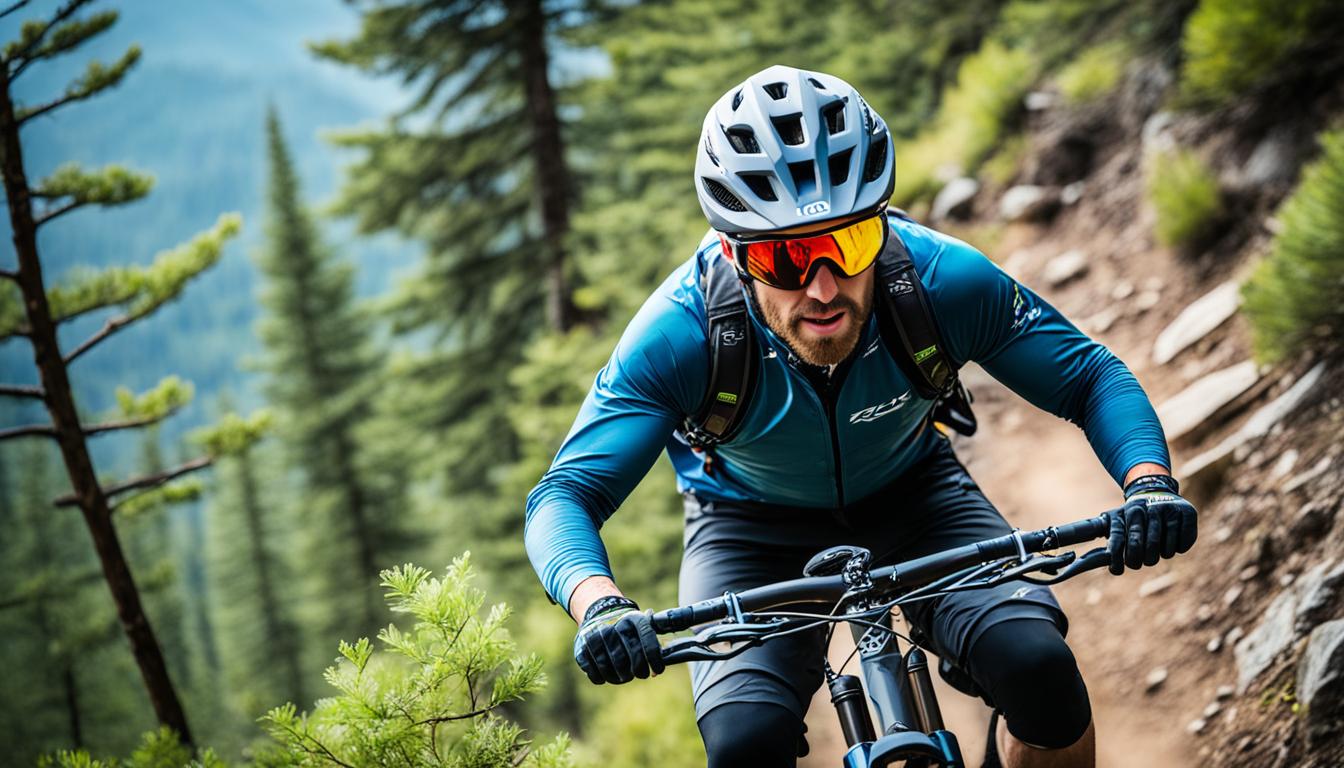Want to get better at controlling your enduro mountain bike? It’s key for upping your game and staying safe. Learning to handle your bike well lets you confidently ride across different terrains. It also makes biking more fun. Focus on things like suspension setup, choosing the right tyres, and learning expert riding techniques. These steps can change how you ride. They help you face tough trails head-on.
Ready to learn more about honing your enduro biking skills? Have a look at this guide. It’s full of tips to master bike handling. These tips lay the groundwork for becoming a pro at mountain biking.
Importance of Suspension Setup
A well-set suspension is crucial for an enduro mountain bike’s top performance. It makes the ride better and helps handle different grounds well. We’ll look into what makes a good suspension setup work.
Understanding Suspension Dynamics
Suspension dynamics are key to a bike’s trail behaviour. A fine-tuned suspension helps riders soak up bumps and keep good grip, making the ride smoother. Getting the right setup means balancing sensitivity for small bumps with support for big ones. It’s vital to adjust this for your style and the terrain to get the most from your bike.
Setting Your Sag for Optimal Performance
Correct sag setting is vital for good suspension work. It helps the bike react well to different situations. Aim for about 30% rear shock sag and 20% fork sag. Adjust the air pressure in steps of 10 psi to get this right. With careful tuning, you can make your suspension more balanced and reactive.
Pre-Maintenance Checks
Do pre-maintenance checks before adjusting your suspension. This ensures every part works well, helping with your bike’s upkeep. You should service your forks and shocks every 50 riding hours to keep them in top shape. Checking seals, O-rings, and parts early on stops bigger issues later.
How to Improve Enduro Mountain Bike Handling
Improving your enduro bike handling means mastering air-spring adjustment and tuning skills. By tweaking the setup, riders can better handle different terrains. Finding the right mix of comfort and performance is key, especially on tough tracks.
Optimising Air-Spring Rate
Getting the air-spring rate right is vital for a responsive ride. Too low, and your bike might feel slow; too high, and it’s uncomfortably bumpy. Try changing the air pressure by 10 psi at a time. This helps you see how your bike acts on various grounds. Keep an eye on its behaviour to hit the perfect air-spring setup.
Advanced Tuning Techniques
With basics down, move on to advanced tuning to improve your ride. Tailor the bike’s rebound and compression to fit your riding style. Test out these changes on trails you know well. Pay attention to how the bike copes with hurdles like drops and jumps. Adding volume spacers can tweak the spring’s progression, making your bike suited for bolder moves.
To ride better, also learn from experienced bikers. For extra bike handling tips, visit this guide on essential riding techniques.
Choosing the Right Tyres
Choosing the right tyres for your enduro mountain bike is very important. It can really change how your bike handles on different trails. You should think about the tyre width, tread patterns, and how they match the trails you ride. Knowing these things can make your ride smoother and more fun.
Effects of Tyre Width and Tread
Tyre width is super important for how your bike performs. Wider tyres, which are usually between 2.35” and 2.5”, help your bike grip better on rough trails. They give you better traction and stability. Starting tyre pressure around 1.8 bar (26 psi) is good for these widths. But, if you go over 2.6”, it might feel too soft. This can make your bike less sharp in corners. The kind of tread you choose also makes a big difference. Aggressive treads are great for mud, while smoother ones are best for hard-packed trails. If you’re looking to get better at going uphill, you might want to check out this guide.
Selecting Tyres for Different Terrain
Different trails need different types of tyres. If you ride on many kinds of trails, you might need more than one type of tyre. For hard-packed trails, you want tyres that are firm and roll quickly. This makes you faster and more efficient. But, on softer ground, tyres with aggressive treads give you better grip. Changing your tyres with the seasons or for special events can help your bike handle better. Even though good enduro tyres can be pricey, they’re worth the investment. Adding tyre inserts can protect your rims on tough rides too.
Riding Techniques to Enhance Handling
Learning to ride well is key to better handling of an enduro mountain bike. Knowing how to position your body and brake right improves control over different grounds. By practicing often, riders get much better and more confident.
Body Positioning and Weight Distribution
Getting your body positioning and weight distribution right is crucial. It’s all about balancing well and adjusting your weight when necessary. This approach keeps the bike stable and improves grip. Spending an hour on pump tracks regularly can really help with this.
Braking and Cornering Strategies
Good braking strategies and cornering are a must for better handling. It’s best to slow down before a corner and keep your speed as you turn. Trying out different ways to take corners makes you good at handling various trails. The aim is to brake less heavily, helping you to race faster and with more control.
Practising on Varied Terrain
Challenging yourself on different terrains is important for building key handling skills. Timed runs downhill teach you to pick better lines and ride smoothly. City rides are great for practicing jumps and hops. Riding on gravel improves your fitness, which is good for your balance and skills.
Conclusion
To improve your enduro mountain bike handling, focus on mechanical tweaks and skill building. Adjusting your bike’s setup, like suspension and tyre choice, lays a vital foundation. At the same time, enhancing your riding skills is crucial for confidence across different terrains.
Building rider confidence comes from consistent practice. This practice helps conquer tough trails and techniques. Whether it’s going down steep hills or over rocky areas, having the right skills is key. Trying different riding styles keeps things fresh and aids your growth as a rider.
Combining focus on both your gear and your skills deepens your bond with mountain biking. Embrace technical skills and varied terrains for a transformed riding experience. This leads to more fun and achievement on trails. The path to greatness in enduro mountain biking is full of growth and adventure.
FAQ
How important is suspension setup for my enduro mountain bike?
Getting your suspension setup right is key. It makes sure your bike works well on different grounds. It helps with grip, softens hits, and better manages the bike.
What is sag and why is it significant?
Sag measures how much your bike sinks with your weight on it. Setting the right sag allows your suspension to work best. This is usually 20% for the fork and 30% for the shock.
How often should I service my bike’s suspension components?
You should service your suspension following the maker’s advice—usually every 50 hours for oil checks. It keeps performance top-notch and ensures safety.
What does the air-spring rate affect on my bike?
The air-spring rate changes how your bike feels. The right setting makes handling over bumps better. This makes for a smoother ride anywhere.
How can I choose the right tyres for my enduro bike?
Picking the right tyres depends on where you usually ride. Bigger tyres work well on rough ground. Choosing the right tread pattern also enhances how you ride based on the ground.
What role does body positioning play in mountain biking?
The right body position is key to keeping control and staying stable. Moving your weight the right way lets you tackle various grounds better. It helps improve your riding technique.
Can braking techniques affect my handling on the trail?
Yes, braking the right way is crucial. Braking before corners and keeping speed helps keep your bike stable. It makes taking corners easier.
How can I practice effectively to improve my skills?
Practising on different kinds of terrains is essential. It sharpens your riding skills, helping you deal with technical bits and varied conditions better.
